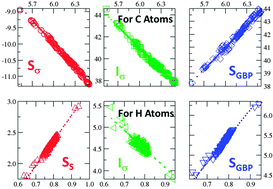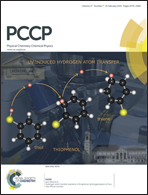Scaling properties of information-theoretic quantities in density functional reactivity theory
Abstract
Density functional reactivity theory (DFRT) employs the electron density and its related quantities to describe reactivity properties of a molecular system. Quantities from information theory such as Shannon entropy, Fisher information, and Ghosh–Berkowitz–Parr entropy are natural descriptors within the DFRT framework. They have been previously employed to quantify electrophilicity, nucleophilicity and the steric effect. In this work, we examine their scaling properties with respect to the total number of electrons. To that end, we considered their representations in terms of both the electron density and the shape function for isolated atoms and neutral molecules. We also investigated their atomic behaviors in different molecules with three distinct partitioning schemes: Bader's zero-flux, Becke's fuzzy atom, and Hirshfeld's stockholder partitioning. Strong linear relationships of these quantities as a function of the total electron population are reported for atoms, molecules, and atoms in molecules. These relationships reveal how these information-theoretic quantities depend on the molecular environment and the electron population. These trends also indicate how these quantities can be used to explore chemical reactivity for real chemical processes.


 Please wait while we load your content...
Please wait while we load your content...